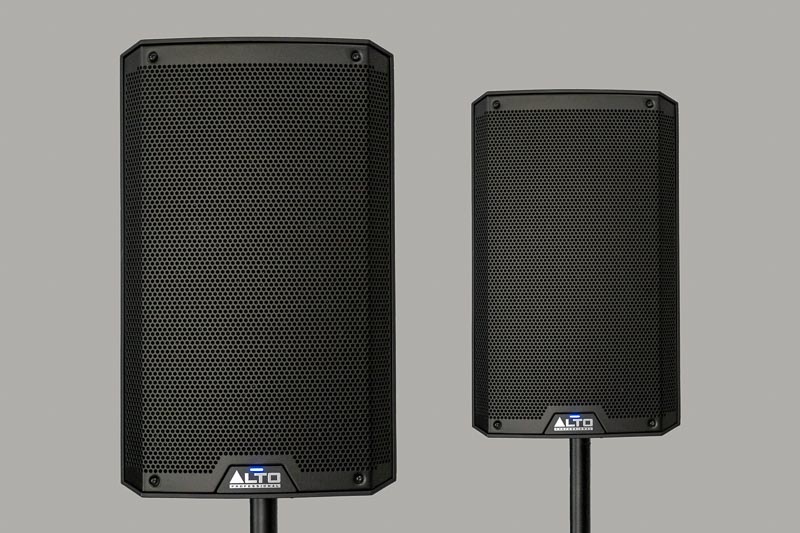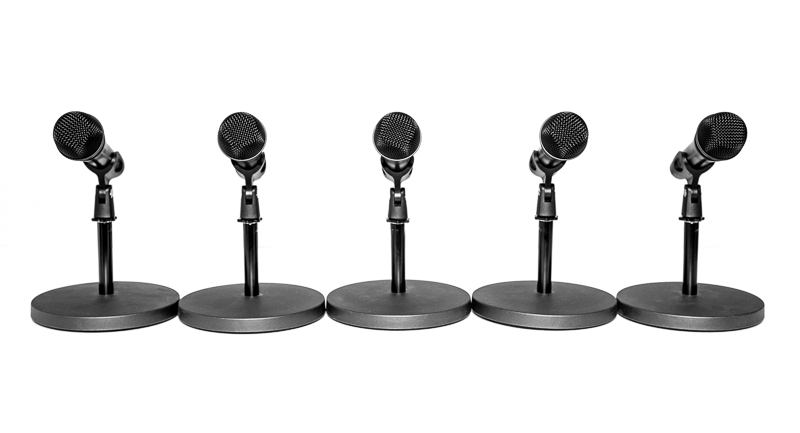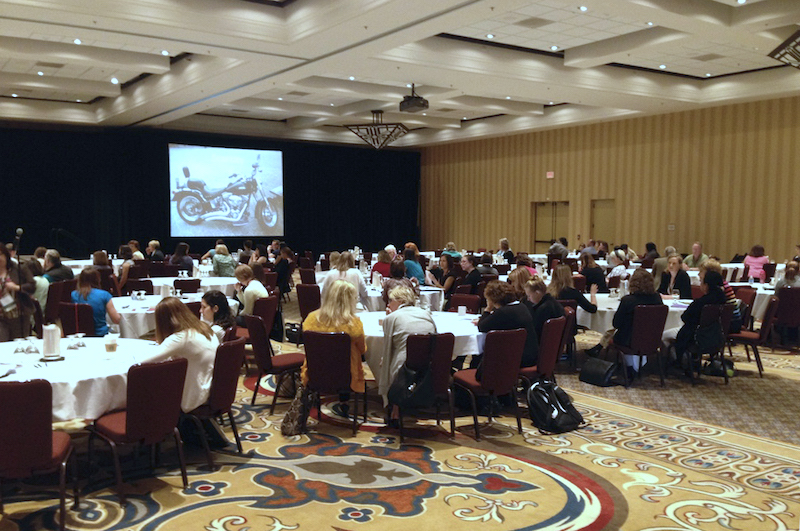Is sound the missing link at your conference? Find out how you can make sure your delegates hear every word.
OK, you’re organising a small regional conference. You’ve lined up great keynote speakers. You’ve booked a conference suite at a local hotel, along with tea, coffee, bottled water, and mint imperials. The corporate banners are sorted, and the delegate packs are with the printer. Most importantly, your PowerPoint slideshow would put an Apple product launch to shame. You’ve thought of everything.…..…right?
Sadly, many of us have attended conferences and similar presentations, where organisers clearly paid more attention to the range of tea bags available than to the technical requirements for sound. This is pretty strange when you consider that we’re talking about essentially speech-based events.
The idea that human voices need a helping hand in large spaces has been understood since the days of classical antiquity. Yet, even with current technology, one of the most common weaknesses at smaller conferences is poor sound.
Any room filled with people acts as a sponge for sound waves. Even a space as small as 100 square metres swallows a normal speaking voice with ease when you add enough bodies. This is particularly the case in rooms with low ceilings. As a result, people at the back of the audience often struggle to hear what’s being said.
If you’re lucky, your venue might provide a simple PA system. This is likely to be the equipment normally used for wedding receptions and after-dinner speeches and probably includes a single wireless mic. However, for most conferences and similar events, this level of sound reinforcement is unlikely to be adequate.
What might your conference sound requirements actually be?
From the early planning stages, you should assess what you might need for your conference in terms of sound equipment. The questions below are a good starting point:
- Do you need a static mic for presenters who are using a lectern?
- Will any of your presenters be mobile and require a lavaliere (lapel) mic?
- Do any of your presenters like to work as a pair, or group?
- Will you be playing videos during your conference?
- Are you going to take audience questions?
- If you are taking audience questions how many roving wireless mics do you need?
- Will a Q&A panel be answering questions, rather than a single presenter?
- If you’re holding a hybrid conference, will you be taking video questions from online delegates?

Compact but powerful. Alto Professional PA speakers with a 10 inch bass driver and a high frequency horn.
How powerful does your conference sound system need to be?
The requirements for spoken voice presentations are very different from those for music performances and so on. You don’t need the kind of raw power or extended bass response used to amplify a band, for example.
Your main requirement for spoken-word presentations is clarity rather than volume. As a rule of thumb, you only really need to amplify speech to the point that everyone can hear it. There’s absolutely no point in going any louder as this will just fatigue your audience over the course of several hours.
Having said that, sound equipment that is driven hard tends to distort, adversely affecting clarity. It’s also prone to feedback. You should use a more powerful system turned down to a comfortable volume rather than running a small system flat out.
Wireless or wired?
It might be tempting for you to have every mic on your podium wireless. However, this can cause problems with crowded airspace, particularly if there are other events happening at your venue. You will also find wireless lavaliere mics awkward to manage, particularly if you need to swap them between presenters. Much better to restrict your wireless systems only to mics that really have to be mobile.
Having said that, some presenters like to move around and will prefer using a lavaliere mic. Most, however, will prefer working from a lectern or table, particularly if they’re using notes. In this case, it’s best for you to have a cabled mic on a suitable stand. It will almost certainly sound better and won’t be subject to interference or signal loss. The same applies to members of your Q&A panel, who don’t need the freedom of wireless mics.
Find out more about wireless microphones.
How many mics for a Q&A panel?
Most Q&A panels are between three and six people and it’s best to have a mic for each panellist if possible. Small tabletop stands help as they’re less obtrusive and less intimidating than boom stands.

Ideally, each panellist should have their own mic.
Now that you know what you need from your conference sound system, what next?
Armed with the above information, you’re in a good position to approach a professional regarding sound equipment for your conference. When hiring in a partner for technical support, be sure that they understand your situation and requirements. Ideally, you should work with someone with experience in providing sound for conferences and similar events. Many PA hire companies earn their money from providing sound equipment for bands. These companies can probably provide a solution. However, you’re likely to find that the solution they provide is more suited to a gig than to a conference environment.
You might be tempted to hire and operate suitable equipment yourself. However, unless you have experience in working with sound equipment, this is probably not a good idea. In the scheme of things, the cost difference between dry-hiring equipment and working with an experienced engineer is negligible. Offset this against the benefits of having less to worry about during your event and you’re in no-brainer territory.
Making the most of your conference sound system.
Getting the most out of a PA system isn’t just about having the right equipment and a good technician. Regardless of your conference sound system’s quality, it can only amplify what your presenters put in. Therefore, you should prepare your less experienced presenters
A little coaching goes a long way.
Many of those who speak at smaller conferences have little or no experience of working with microphones. However, left to their own devices, they’ll probably pay more attention to the remote slide clicker than to their mic.
For example, presenters need to understand that they should face their mic (and their audience) at all times when speaking. Otherwise, they’ll probably act more instinctively, turning to the side when talking to co-presenters or when looking at their slideshow. As a result, they can go significantly off-mic, which, at worst, will render them completely inaudible.
Novice presenters can also become mic-shy because they’re unused to hearing their own voice amplified. This leads them to either talk really quietly or back away from their mic. In both cases, they’re effectively defeating the object of having a microphone at all.
A little time spent instructing presenters, particularly less experienced ones, will be well worth it. Practice time with mics will also help to put novices at ease. Try to build in time during your schedule for all of this, preferably before the house opens for delegates.
And finally.
As already stated, sound is often a very much neglected area of small conference organisation. Thankfully, the technology now exists to amplify the human voice with great clarity, in almost any space imaginable. Unlike our ancient forebears, we no longer need to design buildings around the need to do this.
Hiring an effective sound system, with engineer, could cost less per delegate than on-table refreshments. Personally, I’d rather wait for the coffee breaks than strain my ears for several hours!
Find out more about my event sound and video support services.
Stourbridge-based Mooma Media offers event audio-visual support, event filming, live-streaming, video production, and still photography services to businesses, the public sector, and other non-commercial organisations throughout the Black Country and the wider West Midlands region. To discuss your project, or for a competitive quote click the button below.
Conference sound and video support in and near:
West Midlands county: Birmingham, Solihull, Sutton Coldfield, West Bromwich, Dudley, Walsall, Wolverhampton.
Staffordshire: Lichfield, Tamworth, Stafford, Cannock,Burton upon Trent.
Shropshire: Telford, Shrewsbury, Bridgnorth, Kidderminster, Ludlow.
Worcestershire: Bromsgrove, Reditch, Droitwich, Worcester,
Warwickshire: Warwick, Stratford upon Avon, Leamington Spa, Coventry, Nuneaton,


Comments are closed